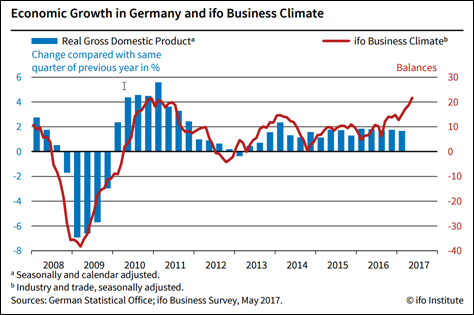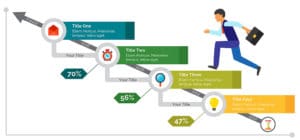The Wall Street Journal digs into the recent equity valuation boost foreseen in our previous note. Beware however, the currency move behind it may be temporary.
Please consider ‘Watch Out: The Weak Dollar Gives Shareholders Money Illusion’ by James Mackintosh.
Even if ‘calling the direction of a currency is always a gamble’, Mackintosh rightly says, the idea of some USD undershoot seems to fit with our own analysis, in which short term expectations and economic surprises combine and help explain the recent developments.
“Investors in Brexit Britain have lived with contradictory signals from the stock market and sterling since the referendum on leaving the European Union: a weak pound means stronger share prices, and vice versa.” |
Indeed, we’ve commented this on various occasions:
“This year America’s had a taste of something similar. The S&P 500 is up 10%, bringing happy feelings to those who peek at their 401(k) plans. At the same time, the dollar has plunged 8.4% against other major currencies. American investors might be tempted to shrug their shoulders, at least those not planning a foreign holiday, and think about the dollar only in terms of its relatively minor economic impact. That would be the wrong approach, as their cousins in London quickly learned. The dollar has been of vital importance to stock prices this year, and provides a better explanation for the S&P’s rise than other positive factors such as low interest rates, economic growth or the recovery in earnings.” |
Agreed. It works this way :
“Shares in U.S. companies with more than half their revenue from outside the country rose by an average of 13%, identical to the gain on MSCI’s (dollar-denominated) index of developed markets excluding the U.S. S&P stocks with less than half their income from abroad gained only 5.9%, according to analysis of FactSet data. The pattern is even clearer when the market is sliced into five segments from those most exposed to foreign revenues to those least exposed. The most-international fifth of stocks have gained 15% on average this year, while the least-international are up just 2%.” |
Enough to justify another rally? Not completely:
(emphasis added)
| “This should leave U.S. investors pondering two big questions: Will the dollar remain so important to company performance, and if it does, is the greenback going further down or will it recover? ” |
And James Mackintosh to conclude :
“Still, history suggests the dollar will continue to matter hugely to individual company performance. Domestic stocks tend to outperform when the dollar strengthens, making foreign profits worth less in dollar terms, and underperform when the dollar weakens. Calling the direction of a currency is always a gamble. Yet, there’s some evidence to go on for the dollar. The drop so far this year has already been very large for such a short period, with only 10 larger falls on a trade-weighted basis since 1973. The move was exacerbated by the amount of optimism that was built in to the greenback after the election, too; speculators have shifted from being crowded into bets on a stronger dollar to being crowded into bets on the euro rising. Any trade can always become more crowded, but we can at least say that the path of least resistance for the dollar is no longer down.” |
‘The move was exacerbated by the amount of optimism that was built after the election’.
Agreed: the Trump trade had a significant impact on the USD. A positive one in its early days, but a much less supportive one afterwards. We suggest that the recent weakness was amplified by rising economic expectations overseas and mounting disappointments in the US.
Interestingly enough, this happens as the US administration intends to fight currency manipulation ….









